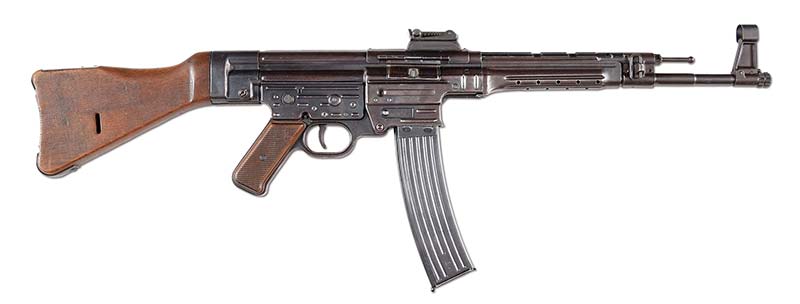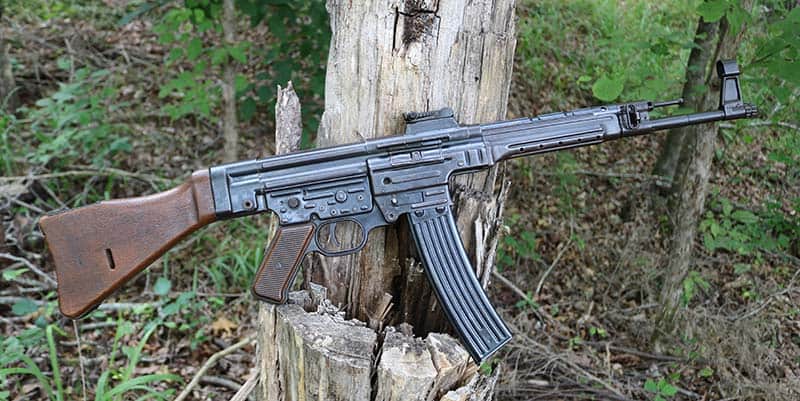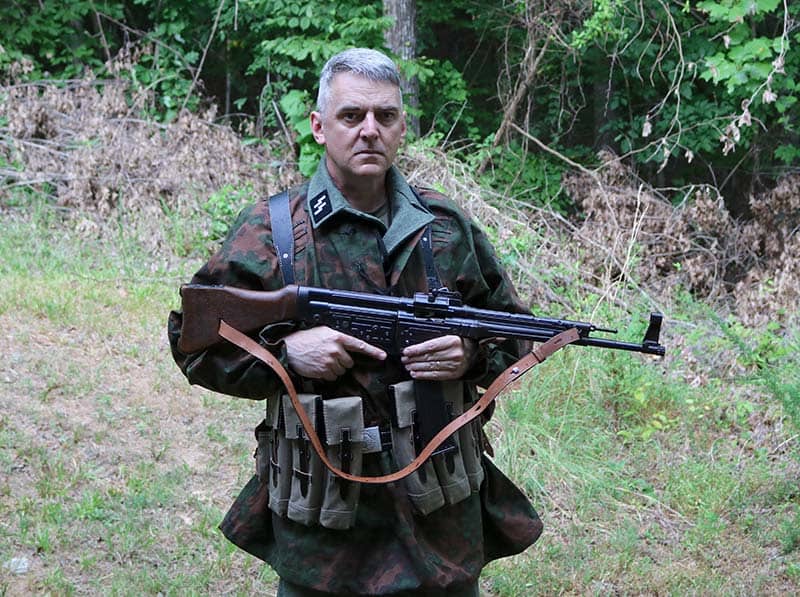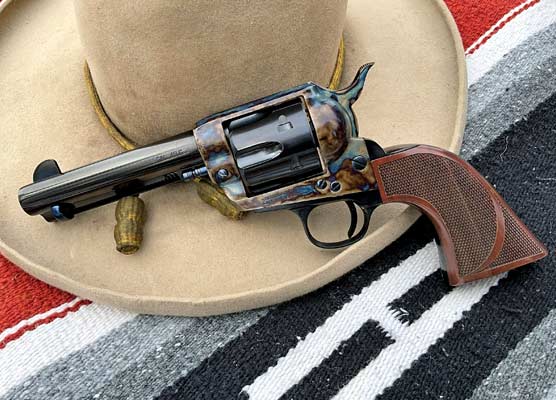The World’s First Assault Rifle
The German MP43
With the crystalline clarity of hindsight, we all know how the Battle of the Bulge turned out. The Germans called it Operation Wacht am Rhein (translation: Watch on the Rhine). They picked this defensive-oriented moniker intentionally in hopes that the Allies might not expect a massive offensive focused on seizing the Belgian port of Antwerp. They were lyrically successful, at least at the very beginning.
Against all odds, the Allied lines held. They were pushed back to form the bulge on the commander’s maps that gave the massive battle its name, but there was not the wholescale rupture of American defenses for which Hitler had hoped. Eventually, the Germans ran out of gas and momentum, spiked their guns, and retreated in disarray. We all know that now. In the closing days of 1944, in the chaotic forests of the Ardennes, however, the outcome of the battle and the war was still anybody’s guess. For the grunts on the ground, this must have been terrifying.
The man was an Army surgeon who volunteered before Uncle Sam could draft him. Amidst the cold and the chaos of the Bulge, time had little meaning. He was a healer working in a butcher’s shop. The steady stream of shredded meat eventually just ran together. He had been operating for longer than he could remember. There was just no shortage of business.
The tent was well-lit and heated. It was also prominently marked with a huge red cross. The exhausted physician operated on friend and foe alike. By the time he saw them, the uniforms had already been cut away. Whether it was olive drab or field gray, the shattered bodies underneath all looked the same.
The sounds of firing grew ever closer. Joachim Pieper’s Kampfgruppe Pieper was drawn from the 6th Panzer Army and included the 501st Heavy Panzer Battalion equipped with the latest Tiger II tanks. As Pieper’s fanatical SS troops approached, the noise and the chaos got worse. Eventually, the crack of tank rounds and artillery bursts shook the ground underneath the tent that served as an operating theater. Shrapnel tore through the canvas roof. Throughout it all, the surgeon kept working.
There was a burst of fire outside the tent that carried an unfamiliar cadence, and a camouflaged soldier barged through the gaping flap. He wore the characteristic smock and cloth helmet cover of the Waffen SS and carried a strange rifle with a long-curved magazine. This man was breathless from exertion and adrenaline. For a pregnant moment, everything stopped.
The SS trooper surveyed the accumulated wounded and raised his rifle. Without much conscious thought, the surgeon dropped his instrument and wrapped his bloody gloved hands around a nearby carbine. Before the SS villain could machinegun his wounded, the exhausted surgeon shot him five times in the chest. Satisfied that the threat was no longer threatening, the Army surgeon dropped the little rifle and went back to his surgery. War is hell.
The strange rifle this maniacal SS man was carrying was the radically advanced MP44. Allied troops encountering it for the first time often called it “that German Buck Rogers gun” after the science fiction serials of the 1930s. Given how revolutionary the weapon was in comparison with its contemporaries, such sci-fi references certainly seem justified.
The spark that became the MP44 actually germinated in 1918. A German Hauptmann Piderit, part of the Gewehrprüfungskommission (“Small Arms Examination Committee”) of the German General Staff in Berlin, penned a paper suggesting that full-power rifle rounds were excessive for the modern battlefield. This seed eventually germinated into the 7.92x33mm kurz round in 1938.
The 7.92×33 kurz was 24mm shorter than the standard 7.92x57mm round used by the German military and packed exactly half the powder charge. This cut the round’s effective range down to around 400 meters, but it yet remained cheaper to make and easier to run. The ameliorated recoil also made the cartridge amenable to use in selective fire weapons.
The first combat trials of the MKb 42(H) and MKb 42(W) began on the Eastern Front in 1942. Developed by Haenel and Walther, respectively, both weapons fired the stubby 7.92x33mm kurz round out of the same 30-round curved box magazines. Certain attributes were taken from both weapons to form the definitive MP43. This rifle was eventually called the MP44 and the StG44, but they were all essentially the same gun.
The MP43 weighed a whopping 11 pounds 5 ounces loaded, but it was made predominantly from inexpensive steel stampings and was, therefore, relatively cheap. Its prodigious weight also made the gun exceptionally controllable. In so doing, the MP43 changed the world.
The basic design of the MP43 ultimately influenced the AK47 and morphed into every modern assault rifle in the world. The M4, the FN SCAR, the HK G36, and the Israeli Galil all spawned indirectly from that original MP43. War is indeed a most curious thing.
Special thanks worldwarsupply.com for the cool replica gear used by our reenactor.









